AGILITY TESTS
5-0-5 Test
To assess an athlete’s change of direction speed when completing one 180 degree change of direction.
A field or speed and agility space marked with three parallel lines, with the far left marker 10m away from the centre marker, and the far right marker 5m away from the centre marker (see diagram below).
The athlete starts in a three point start position on the far left marker and waits for the assessors starting signal, upon hearing the assessors auditory starting signal the athlete accelerates 15m to the outermost marker on the right , makes a 180 degree and accelerates 5m and passes the centre marker.
The assessor starts the timer when the athlete first crosses the centre marker (at the 10m mark) during the first 15m acceleration and stops the timer when the athlete re-crosses the centre mark after marking the 180 degree turn and re-accelerating 5m. If the athlete fails to reach any of the markers before making the 180 degree turn the test is a failed test and must be repeated. The test is completed three time turning on the right leg, and three times on the left leg (six in total) and the average calculated for each turning leg (rounded to the nearest 0.01 s).
Pro Agility Test
To assess an athlete’s change of direction speed when completing two 180 degree change of directions.
A field or speed and agility space marked with three parallel lines, with the far left marker 5 yards away from the centre marker, and the far right marker 5 yards away from the centre marker (see diagram below).
The athlete starts in a three point start position on the centre marker and waits for the assessors starting signal, upon hearing the assessors auditory starting signal the athlete accelerates 5 yards to the outermost marker on the right , makes a 180 degree turn and accelerates 10 yards to the far left marker, before making another 180 degree turn and re-accelerating back over the centre marker.
The assessor starts the timer when the athlete sets off from the centre marker and stops the timer when the athlete re-crosses the centre mark after marking the two 180 degree turns.
If the athlete fails to reach any of the markers before making the 180 degree turn the test is a failed test and must be repeated. The test is completed three times, and the average calculated (rounded to the nearest 0.01 s).
T - Test
To assess an athlete’s change of direction speed at combined linear running, lateral shuffling and backwards running.
A field or speed and agility space marked with four cones, with 10 yards linearly between the start cone and centre cone, 5 yards laterally from the centre cone to the left cone, and 5 yards from the centre cone to the right cone (see diagram below).
The athlete starts in a three point start position on the start cone and accelerates 10 yards forwards to the centre cone and touches the cone with their right hand, the athlete then laterally shuffles 5 yards to the left and touches the left cone with their left hand.
The athlete then laterally shuffles right 10 yards to the far right cone and touches the cone with their right hand, before laterally shuffling back left 5 yards to the centre cone and touches the cone with their left hand. After touching the centre cone, the athlete runs backwards past the original start cone and the time is stopped.
If the athlete fails to touch any of the markers, then the test must be repeated. The test is completed three times, and the average calculated (rounded to the nearest 0.01 s).
Hexagon Test
To assess an athlete’s multi-directional change of direction speed.
A field or speed and agility space marked with a taped hexagon shaped with each internal angle between each side set at 120 degrees, and each side being 61 cm in length (see diagram below).
The athlete starts standing in the middle of the hexagon in an athlete ready position.
On the assessor’s auditory signal, the athlete performs repeated bilateral hops from the centre start position over each side of the hexagon and back again to the centre in a continuous clockwise fashion until all six sides have been covered three times, making for a total of 18 hops. The athlete remains facing in the same direction throughout the test.
If the athlete lands on the side of the hexagon rather than over it, loses balances or misses a side out, then the test is stopped and must be repeated. The test is completed three times, and the average calculated (rounded to the nearest 0.1 s).








